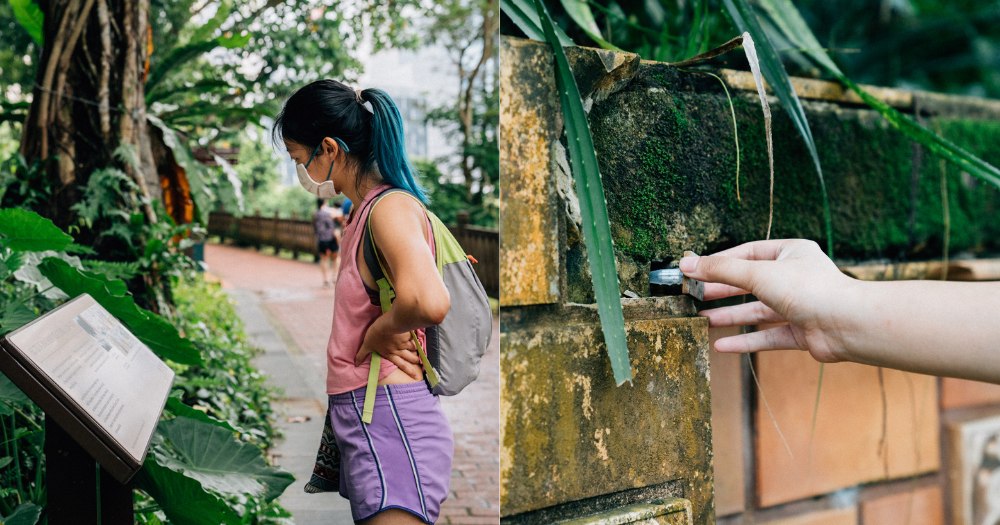One overcast Sunday morning in September, I find myself standing at the foot of the picturesque Fort Canning Park Tree Tunnel instead of being bundled up in bed, happily snoozing away.
 Photo by Andrew Koay.
Photo by Andrew Koay.
No, I'm not here to take Instagram-worthy photos along with the rest of the masked individuals waiting at the base of the staircase for their turn (although I do admit, it is very Instagram-worthy).
Instead, I am here to learn about geocaching, a global treasure hunt-like activity in which participants — known as "geocachers" — look for "caches" (waterproof containers) that are camouflaged or hidden just out of sight by other geocachers.
Overseas leisure travel is on hold, and I've been looking for things to do in Singapore. So, I figured, why not explore what's in our own backyard, through geocaching?
And who better to learn it from than 30-year-old Zachary Kok, who has been an avid geocacher for almost a decade, and who has discovered more than 6,000 caches over his geocaching career — the most of anyone in Singapore — and has set up more than 150 of his own?
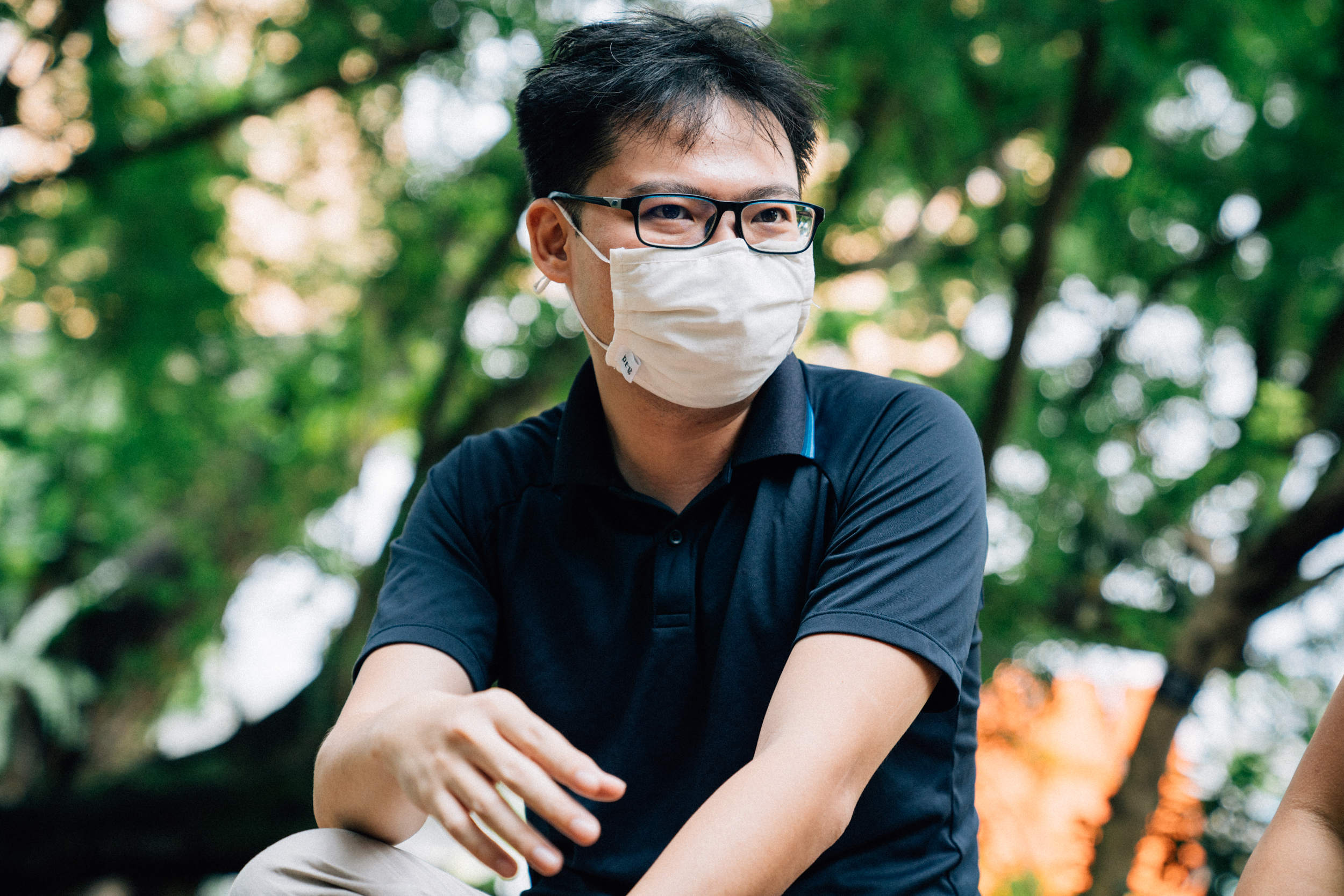 Photo by Andrew Koay.
Photo by Andrew Koay.
Getting started
Two of Kok's friends, also experienced geocachers, are joining in for the adventure as well, and after some quick introductions, it's time to get geocaching.
 Photo by Andrew Koay.
Photo by Andrew Koay.
The first step is to sign up for a free account online, or on the Geocaching smartphone app.
After logging in to the app with your account, the app shows a map of the "caches" near your location and some hints on how to find them.
There are more than 700 caches around Singapore, and they can be hidden anywhere — from malls such as Orchard Central or Clementi Mall, to under a pipe in the Marsiling Tunnels or inside coconut shells on Lazarus Island.
The caches themselves range from small tubes tucked in discreet places to puzzles that require significant problem-solving skills in order to open, and contain within them logbooks for finders of the caches to sign.
For dedicated geocachers like Kok, paying for a premium account (S$5.99 monthly or S$29.99 annually) allows them to access all types of caches, download maps offline, and more, opening up all of the possibilities of geocaching to them.
After all, the fees go back to Geocaching HQ, the organisation that keeps the platform running.
As a beginner to the activity, I stick to the free account for now, which still gives me access to a large number of caches.
 The green circles mark caches available to those with free accounts, while the grey ones require a premium account. Photo screenshot from Geocaching app.
The green circles mark caches available to those with free accounts, while the grey ones require a premium account. Photo screenshot from Geocaching app.
Finding my first cache
Starting out from the Fort Canning Park Tree Tunnel, I see that I am only 17 metres away from a cache.
 Photo screenshot from Geocaching app.
Photo screenshot from Geocaching app.
This cache happens to be one of Kok's, so I have a bit of an advantage in that if I get stuck I can ask the best person possible in that situation for help.
The clue tells me that the cache is hidden in the bird nest fern (I don't know what that looks like, but I figure I'll just look for large ferns). It also instructs me to cover it with leaves after I'm done with it.
Looking at my phone, I walk toward the location marked on the map. It takes me a bit off the paved path, onto the grass and toward some plants.
I notice some ferns, and after a minute or two of looking around and poking around at the plants, I notice some fallen leaves amidst a fern that seem to be pointing in slightly unnatural directions.
I shift the leaves aside and find a styrofoam "rock" designed by Kok to blend in with the greenery.
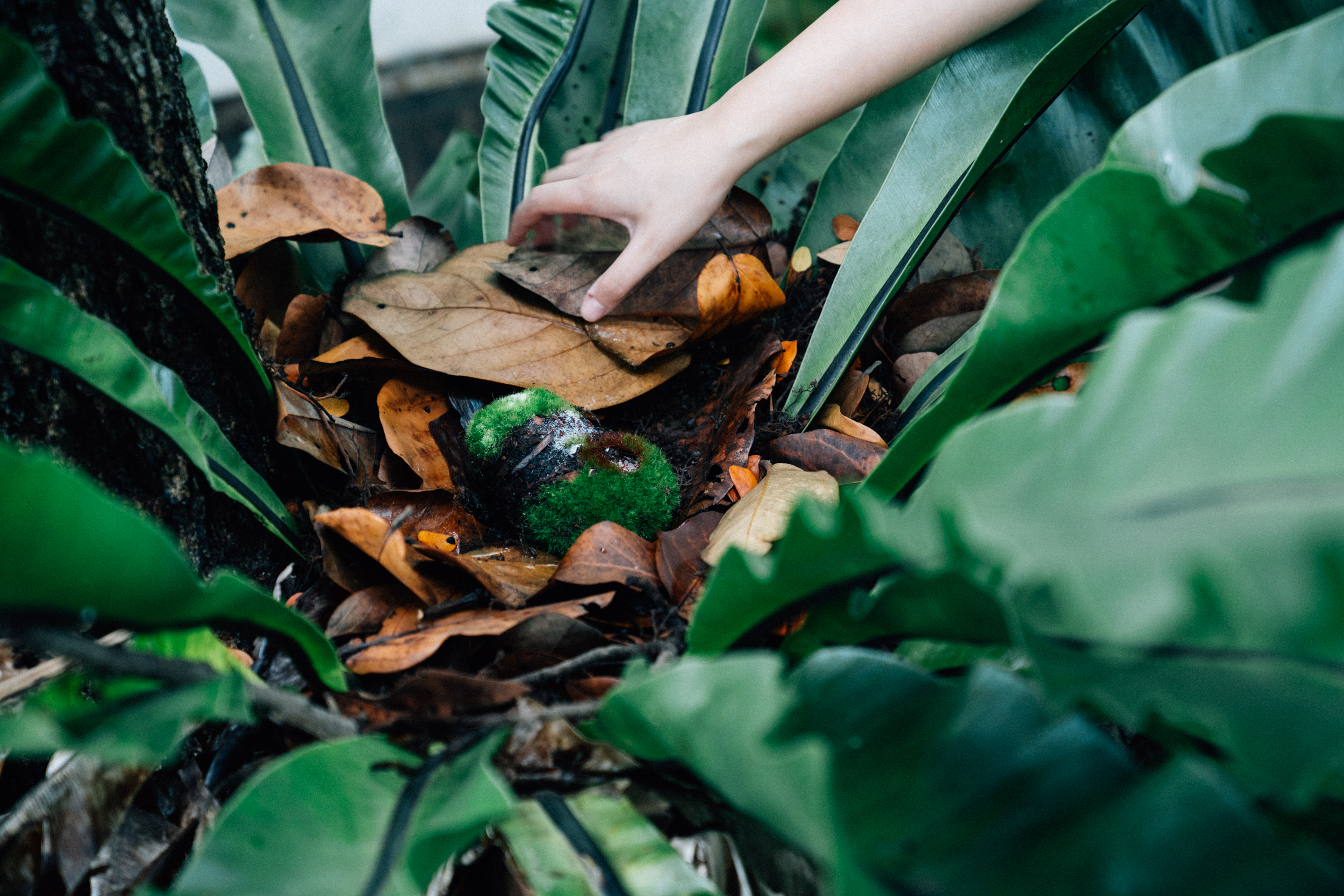 Photo by Andrew Koay.
Photo by Andrew Koay.
Success!
Stuck into the bottom of the "rock" is a small test tube — the cache — inside of which is a thin, rolled-up piece of paper that serves as a "logbook" for successful geocachers to leave a record.
 Photo by Andrew Koay.
Photo by Andrew Koay.
I sign the date and my geocaching username on the logbook and put it back — carefully — where I found it.
 Photo by Andrew Koay.
Photo by Andrew Koay.
Recording your find in a log
After I find the cache, the next step is to record my find in the app, and to write a log about the experience.
I keep my comments short and to the point, in the interest of time:
 Photo screenshot from Geocaching app.
Photo screenshot from Geocaching app.
For Kok, a junior college physics teacher, however, logs are almost a sort of creative outlet for him, like a journal, where he can write to his heart's content and share his experiences with his fellow geocachers.
Kok takes logs so seriously that sometimes he doesn't log his cache finds for several weeks, so that he can find time to write a proper review:
"That's why sometimes I take longer to write logs. Sometimes I just want to sit down, get the right inspiration, and write a nice, long essay."
He shares a few of his favourite logs with me, such as this one reflecting on geocaching during the Covid-19 pandemic.
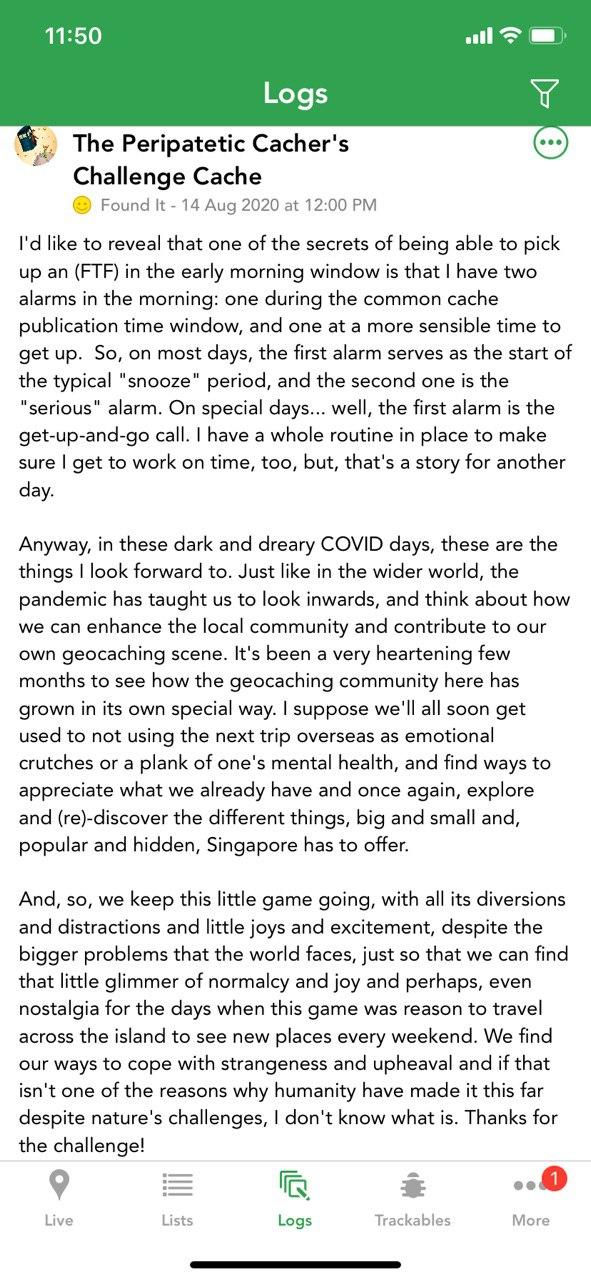 Photo courtesy of Zachary Kok.
Photo courtesy of Zachary Kok.
Some of his logs are more lighthearted, such as the one which he wrote to the tune and beat of the song "Prince Ali" from Aladdin.
Others dig a little deeper, even bordering on philosophical.
But the one thing they have in common is the time and heart he clearly puts into them.
I make a mental note to learn from Kok and work a little harder on logging my future cache finds.
Researches history of the locations
Having successfully completed and logged my first geocache, I move on to another cache at Fort Canning, which also happens to be one of Kok's.
This one, called the Ruler of Singapura, is located on a terrace known as the Walk of the Five Kings, and references the myth of Sang Nila Utama discovering Singapore.
One interesting thing about Kok's caches are the in-app descriptions that come along with them. Like how he writes logs for caches he finds, he also puts ample time and effort into writing the descriptions of the caches he makes.
He does substantial research in order to share the history and background information about the cache's location.
"You learn more about the place you are in, and that is part of the whole process. You find out more and you share with others.
We've been researching and discovering and finding out new places, or even visiting old places with a new knowledge of something there."
For this cache, Kok briefly explains the significance of Fort Canning in the Sejarah Melayu (Malay Annals) and sets the historical context for the reader.
He writes:
"Explore the paths of what was once known as Bukit Larangan (the Forbidden Hill), a place where no common folk would dare thread for fear of offending the royalty, to learn about the legends of 14th Century Singapore.
You'll see where ancient kings bathed in a sacred spring and stand at the spot where a local strongman named Badang allegedly lifted and tossed a rock towards the mouth of the Singapore River."
The description also directs me to read the information panels located on the terrace, which I oblige, partially because I hope that reading it may give me a clue about the cache, and because the description gives me just enough information to pique my interest to find out more.
I didn't realise I'd be having a history lesson today, but I'm honestly not complaining.
 Photo by Andrew Koay.
Photo by Andrew Koay.
Ethics of geocaching
"If you're facing the guardians, you are very close," the hint for this cache reads.
I turn to face the "guardians" carved into the wall and look around carefully, peeking into the plants.
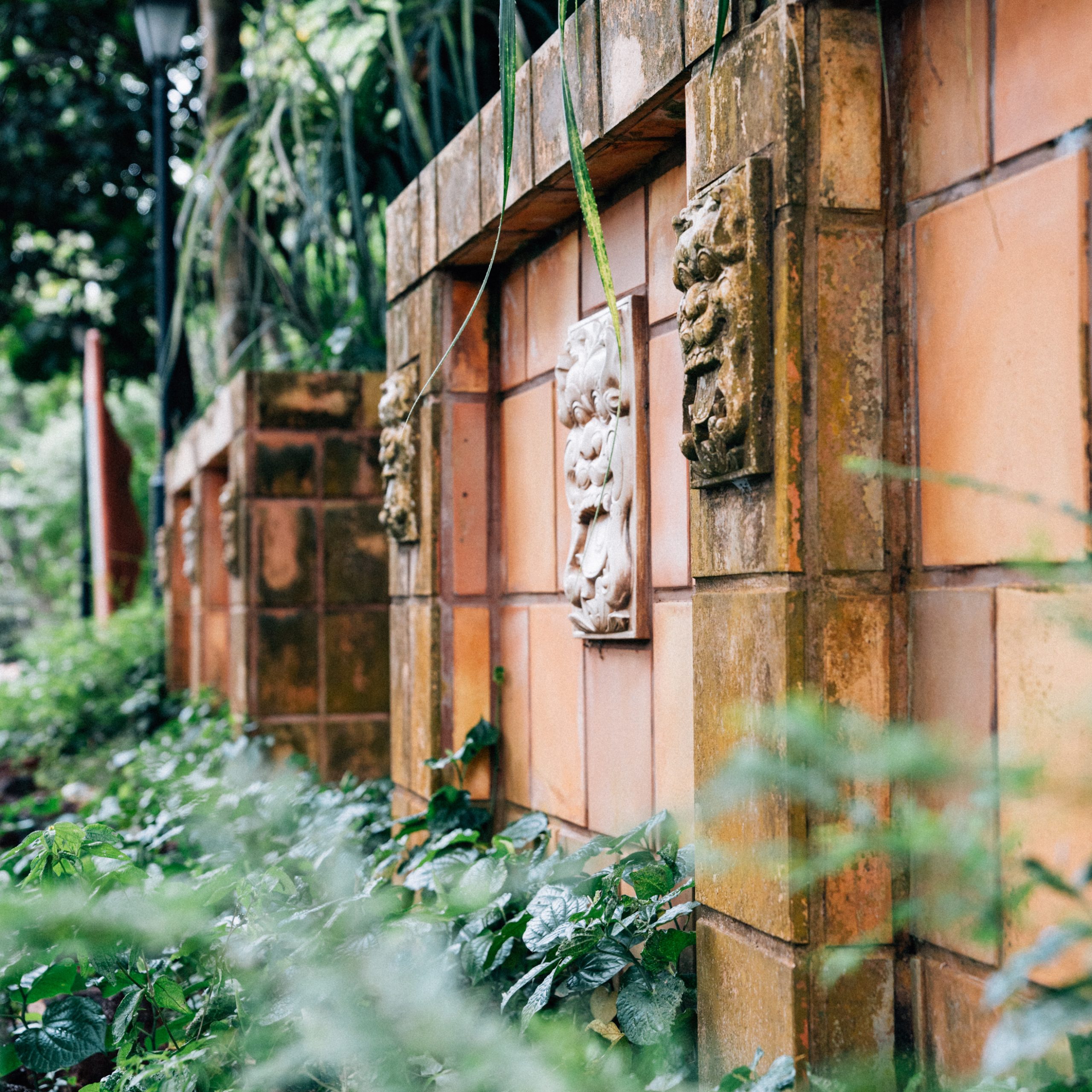 Photo by Andrew Koay.
Photo by Andrew Koay.
"I'm scared to poke around too much and accidentally vandalise something," I tell Kok, laughing.
He assures me that geocaches shouldn't require people to dig around or trample on plants, which he shares goes into the philosophy and ethics of geocaching:
"You don't need to vandalise anything. You don't need to pull anything apart. Treat the world with respect."
When creating caches for others to hide for others to find, geocachers should also be mindful of whether the location will get other geocachers into trouble, make them look suspicious to others, or be a nuisance to the public, he says.
Finally, seeing that I am still struggling to find the cache, Kok throws me another clue: look for something that looks like it belongs, but not quite.
I look at the faces of the guardians again, and my eyes scan the wall. Suddenly, they lock onto a small square-shaped piece of wood.
Could this be it?
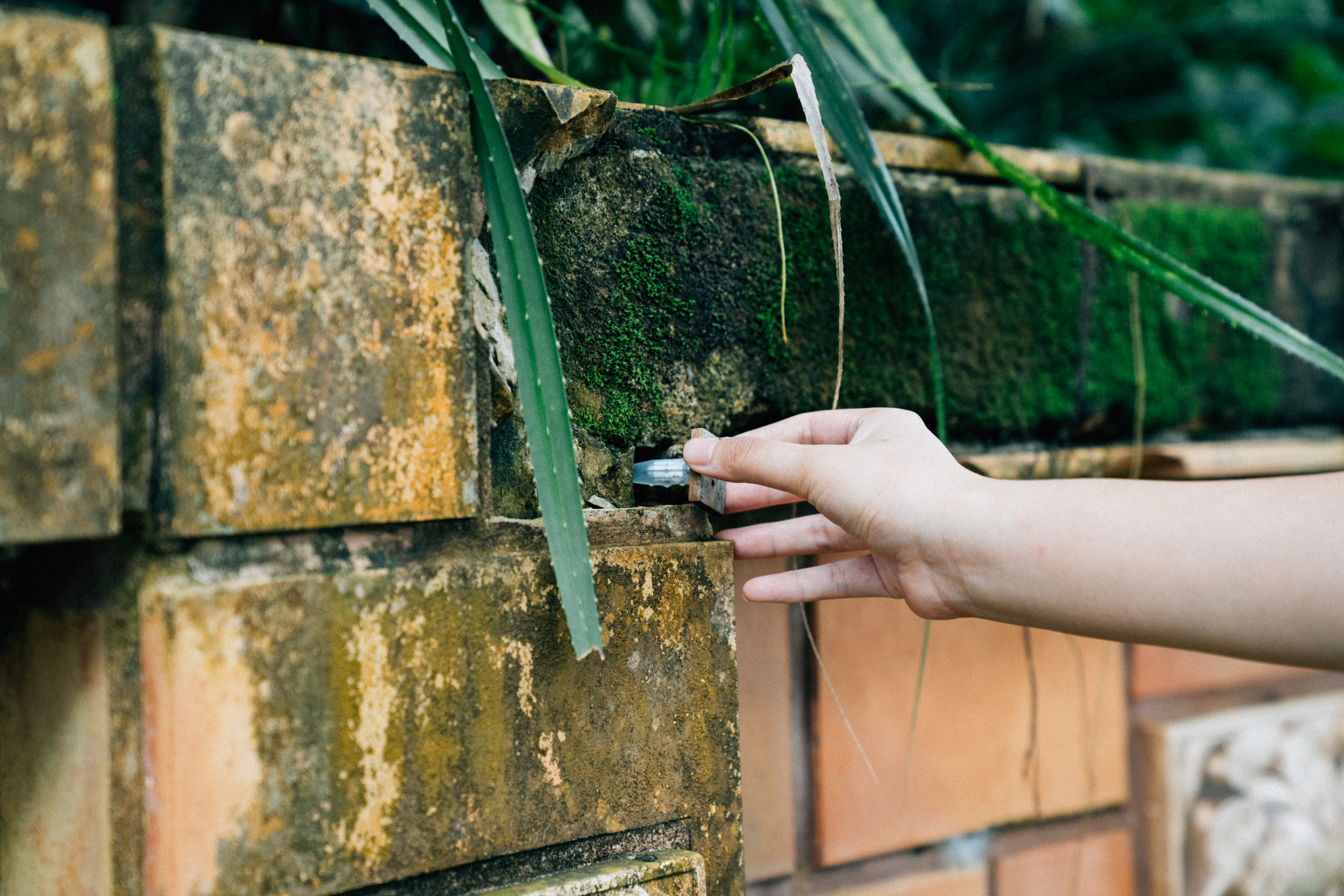 Found it! Photo by Andrew Koay.
Found it! Photo by Andrew Koay.
Although finding a cache is such a small thing, and I got way more help from Kok than I should have needed, I'm still filled with such pride and exhilaration.
It may not seem like much — it's just a small slip of paper hidden somewhere — and there's no prize for finding it.
But there is something exciting about the fact that, to any random passer-by, this is just a wall, but for geocachers, there is something hidden here — right in plain sight — for them to find, that no one else knows about.
A cache that has been hiding in plain sight for more than 12 years
We head over to another cache — and oldie but a goodie, Kok tells me — at another part of Fort Canning.
As we walk, Kok and his friends tell us that the cache we are going to, called "Hidden Object", was created by two geocachers all the way back in 2008.
It has managed to stay intact for more than twelve years.
It's impressive that the cache has remained functional for so long, as one problem that geocachers sometimes face with the caches they set up are unwitting individuals who aren't familiar with geocaching taking or misplacing the cache, thinking it's merely a trinket or trash.
This is known as being "muggled", a reference borrowed from the Harry Potter series.
As the app tells me that I am approaching the Hidden Object cache, though, I see why it has remained so well-hidden.
A small photo in the app serves as a clue for what we're looking for, but it takes me several minutes of looking at the wall before I'm finally able to spot what I'm looking for.
 The hint from the Geocaching app.
The hint from the Geocaching app.
I won't give the exact location of this one away, but see if you can spot it in the following picture:
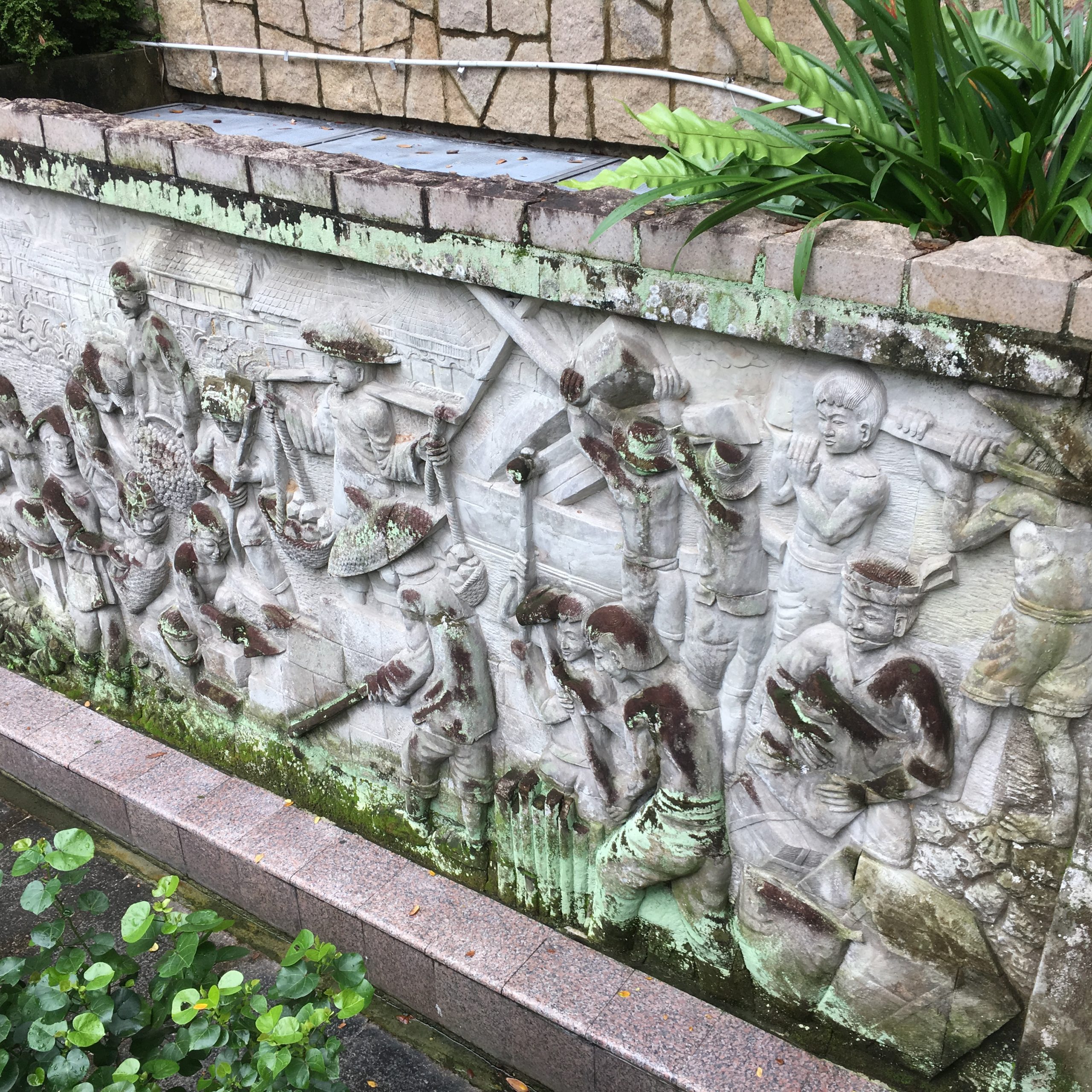 Photo by Jane Zhang.
Photo by Jane Zhang.
"Once you see it, you can't unsee it," my colleague Andrew remarks to me.
More than just a treasure hunt
We do a couple more caches in the area, including a series of five virtual caches by Kok that follow the history of George Dromgold Coleman, an Irish architect in Singapore's early years as a British colony.
You might find his name familiar — his legacy remains by way of Coleman Street and the Coleman Bridge.
There is no physical logbook to be found for the virtual caches. Rather, I have to look for clues around me, and enter information into another app called Geocaching Adventure Lab.
 The Coleman Bridge in Clarke Quay is named after him, and is part of Kok's virtual cache adventure. Photo by Andrew Koay.
The Coleman Bridge in Clarke Quay is named after him, and is part of Kok's virtual cache adventure. Photo by Andrew Koay.
After finishing the five virtual caches, there's an optional sixth secret cache that I can choose to find using bonus information that was hidden in the five cache clues.
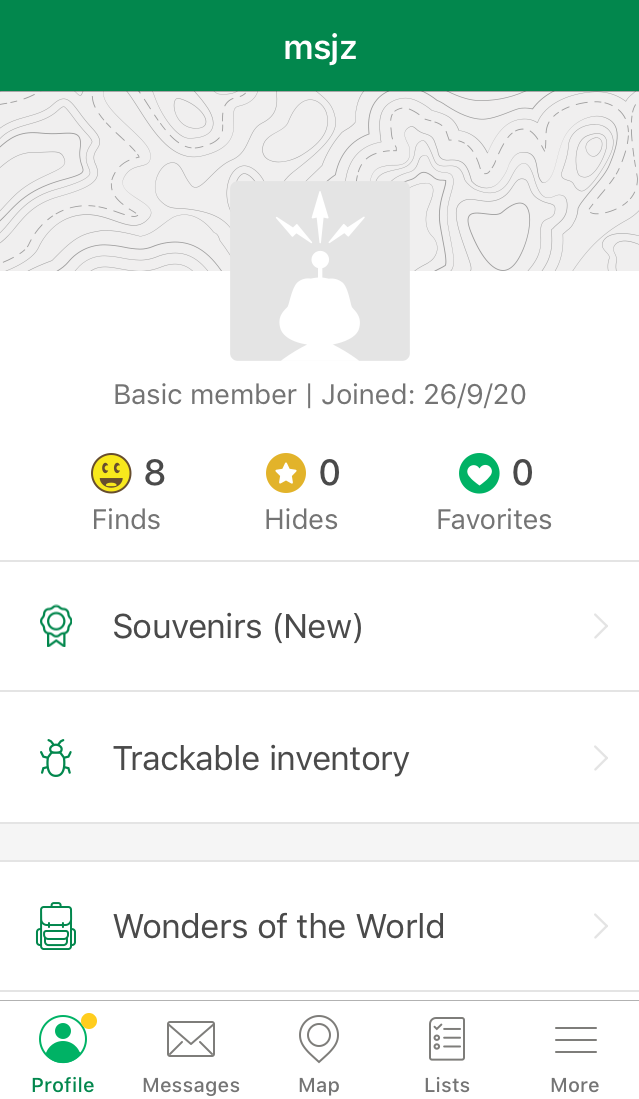 Photo screenshot from Geocaching app.
Photo screenshot from Geocaching app.
As I finish up my morning of geocaching — during which I finish eight caches — I realise two things.
First, geocaching is a great form of exercise — I've hit almost 10,000 steps in just three hours. Not bad for someone who often gets less than 2,000 steps per day.
And second, my initial expectations about geocaching were solidly surpassed — I thought that it would just be about following a dot on a map on my phone, scribbling down my name, and calling it a day.
However, from my morning with Kok and his friends, I see that geocaching is actually so much more than just hiding and finding things.
It's also actually entirely about community: sharing knowledge with one another, creating puzzles for the enjoyment of others, and finding like-minded people to connect with.
The Geocaching community
In fact, the community that Kok has found extends far beyond Singapore's shores.
He has met up with other geocachers in many of his overseas trips, during which he will always make time to geocache, because it's a way to expose him to a part of the country that he might not normally visit.
 Kok (far right) with fellow geocachers at an event in Mongolia. Photo courtesy of Zachary Kok.
Kok (far right) with fellow geocachers at an event in Mongolia. Photo courtesy of Zachary Kok.
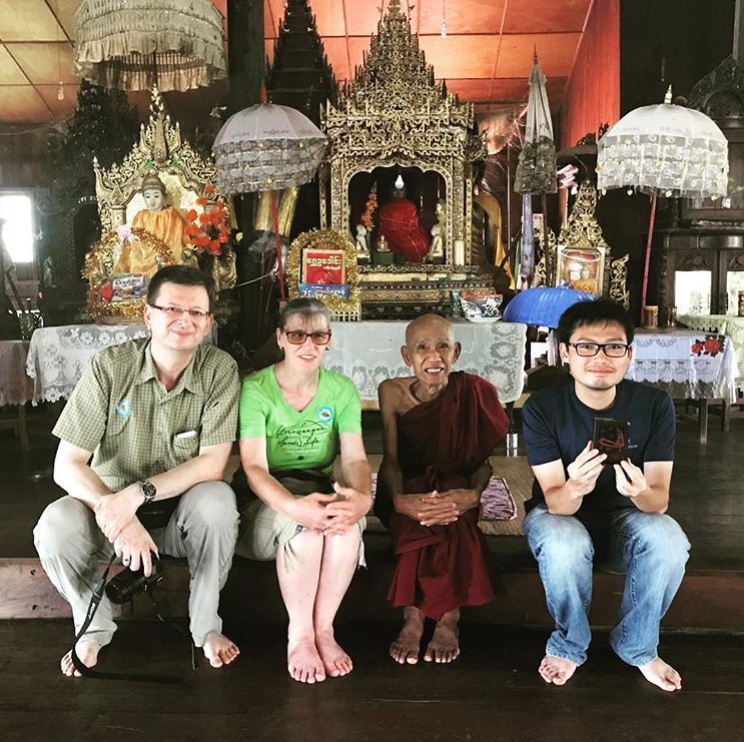 Kok with fellow geocachers in Myanmar, together with a monk who was the guardian of the cache. Photo courtesy of Zachary Kok.
Kok with fellow geocachers in Myanmar, together with a monk who was the guardian of the cache. Photo courtesy of Zachary Kok.
In fact, there have been caches hidden at even the most remote corners of the world, like at the South Pole, and even out of this world, on the International Space Station!
Because of the pandemic, Kok and other hardcore geocachers like his friends haven't been able to go overseas to geocache like they normally do.
As soon as travel is allowed again, Kok plans to continue to explore the world through caches:
"The world is so big, there are so many caches out there. So many places to go."
"Small island, but still a lot to know"
But that isn't stopping them from pursuing their passion for the activity here at home, and discovering new things about Singapore.
"We make the best of what we can," Kok says.
In fact, he and his friends even found a cache in a location most have never ventured to — the beacon at the base of the Fort Siloso cliff on Sentosa.
Kok's passion for geocaching as a way to learn new things about Singapore and build meaningful relationships with like-minded individuals shines through in his enthusiasm to share the joy of geocaching with others, including me.
"It's about a sense of place, a sense of belonging, to your city.
And if you're willing to go out and have an adventure — be it in the city or in the jungles, it broadens your perspective."
For people new to geocaching who are interested in finding out more, the community connects over Telegram, and geocaching events which are posted directly in the app itself.
Its Facebook group isn't as active anymore, which Kok and his friends say is due to a "generation shift" which they seem to have navigated smoothly.
After all, Kok hopes that more young people will take up geocaching as a hobby, as a way to understand more about Singapore:
"You learn more about the city around you lah, the hidden corners and all the hidden histories of the place.
[...] And it makes you a richer person, a more knowledgeable person, in general."
If you like exploring stuff, why not explore our podcast here:
Top photos by Andrew Koay.
If you like what you read, follow us on Facebook, Instagram, Twitter and Telegram to get the latest updates.
